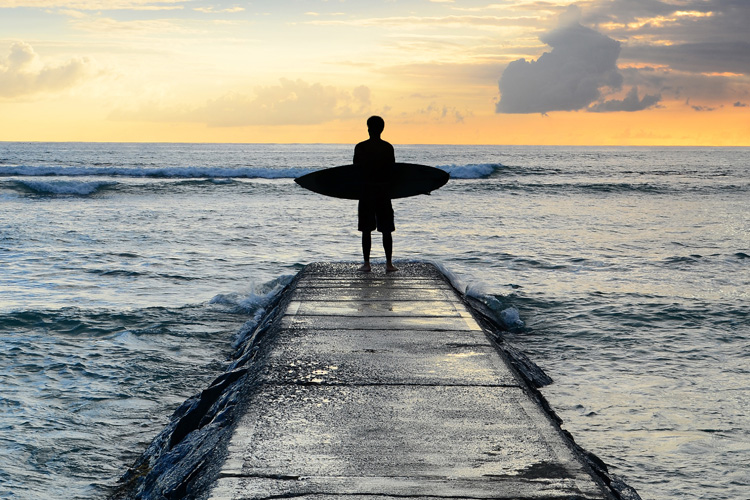They're everywhere. Discover the differences and similarities between breakwaters, groins, jetties, and seawalls.
What have they got in common? They're all artificial shoreline stabilization structures built to protect inland human constructions and fight erosion.
Breakwaters, groins, jetties, and seawalls have a significant impact on the shoreline and can even incidentally create, improve, or destroy surf breaks and surfing waves.
All these human-made mechanisms shape the coastline and alter the behavior and movement of sand and sediments. So, they have both pros and cons.
As a result, the adoption of shoreline armoring practices is often controversial and not always unanimous.
In the US, four states have prohibited the construction of coastal defense structures: North Carolina, South Carolina, Maine, and Rhode Island.
Let's take a look at each one of these artificial marine barriers:
The Breakwater
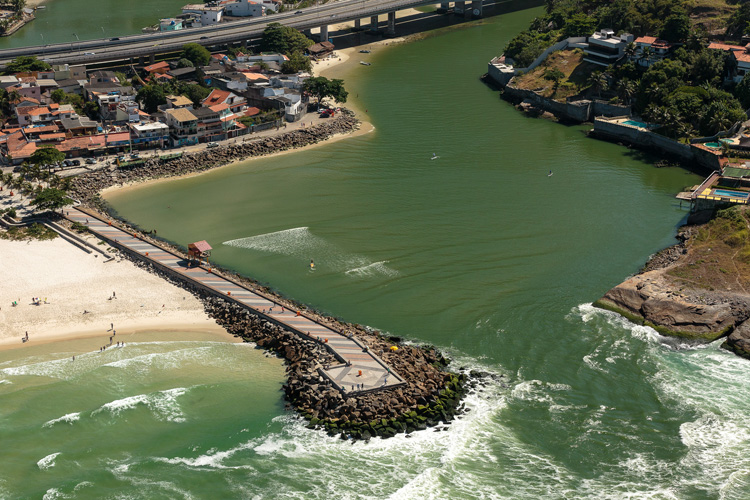
A breakwater is a human-made structure built out into the sea with the purpose of creating a safe harbor, marina, or anchorage for fishing vessels and protecting the coast from powerful swells and waves.
Breakwaters are often constructed near the coast - parallel or perpendicularly - and may be part of a larger coastal management plan.
Because they're physical obstacles, they tend to trap sediments - sand, small rocks, algae - and even some marine life species.
They can be useful tools to prevent beach erosion, but breakwaters also have unintended negative consequences.
A breakwater may be floating offshore or fixed, and it is traditionally built using large granite rocks that can handle the impact and the energy of the waves.
The Groin
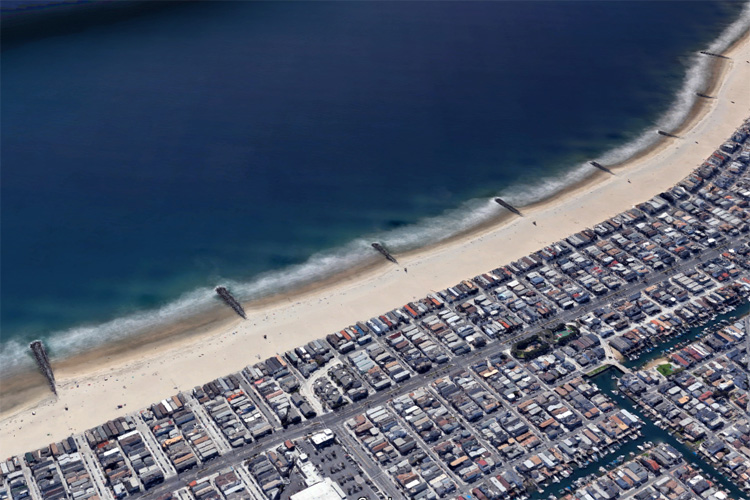
A groin is a medium-sized artificial structure built perpendicular to the shoreline. It is built in series that work together to catch sediments in the surf zone brought by longshore drift.
Unlike the breakwater, which generates calm water basins, groins are not constructed to create harbors and do not provide shelter to fishing boats, yachts, and vessels.
Groins are usually made from concrete, wood, or stone, and the spacing between them is determined according to local beach slopes and wave energy patterns.
The Jetty
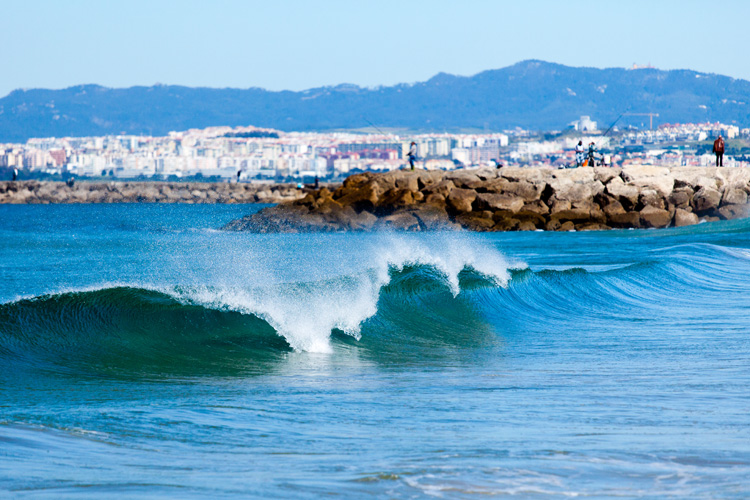
A jetty is a robust man-made structure that completely redirects or interrupts the longshore current and accumulates sand on the updrift side.
The only difference between jetties and groins is the extension of the structure.
A jetty is usually longer and narrower than a groin and is not part of a series. It is often built on either side of a river mouth to keep the navigation channel open.
Jetties also protect the coastline from tides, currents, and swells and defend the shore from erosion.
The Seawall
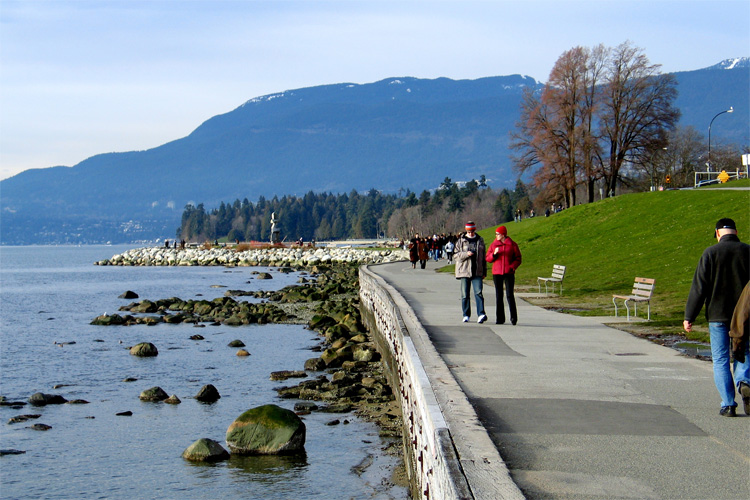
A seawall is a large barrier built along the shoreline to protect coastal communities against flooding and mitigate the effects of erosion.
Like the breakwater, the seawall is fully prepared to absorb the force of the currents and swell. It deflects the waves and is ready to act as a coastal defense against tidal movements, too.
Seawalls protect inland residential, commercial, and industrial properties and roads, so they're generally built using reinforced concrete, boulders, large biodegradable sandbags, gabions, steel, and other materials.
A seawall is considered a long-term solution against erosion and can be used for recreation and sightseeing. However, it is generally expensive and causes beaches to disappear.
